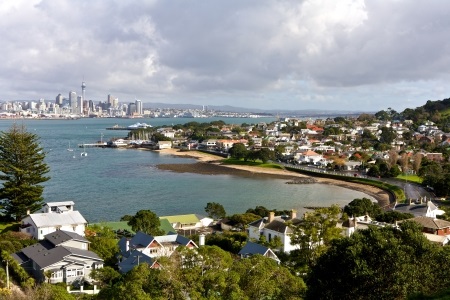JLL has released its Pulse reports on the performance of the Auckland Retail, Office and Industrial markets for the third quarter of 2016. 
In the Auckland prime retail market, the third quarter has been another period of strong rental growth and intense competition for the best CBD retail spots around lower Queen Street and Britomart. Prime rents have hit a record high of NZD 4,000psm, fuelled by tourist numbers and robust consumer demand. Rental growth is forecast to persist into 2017, driven by restricted supply. Vacancy for CBD retail is very tight at 2.1 percent.
The Sylvia Park shopping centre has emerged as a winner in terms of attracting international retailers, with both Zara and H&M opening flagship stores there. The lack of suitable space in the CBD may see more large-format international retailers choose suburban locations until capacity becomes available in more centralised locations.Retail yields firmed across the CBD and all suburban markets. Prime CBD retail yields firmed to 5.88 percent, a 60 basis point drop, year-on-year. Investors are keen on quality investment property and the limited availability of stock is driving yield compression across all property sectors including retail. The low cost of funds is also playing a pivotal role. This trend is set to continue into 2017 which will result in further capital value appreciation.
In the CBD office market, overall vacancy increased marginally due to several new projects in the Viaduct and Wynyard area reaching completion. However, vacancy in the core CBD is at its lowest point since December 2007, and demand continues to outstrip supply. Britomart and the waterfront are popular locations. Yields are forecast to firm further and with rents set to continue on their upward trajectory, the first half of 2017 will see capital values for CBD office property reach new heights.
In the fringe and suburban office market, vacancy currently sits at 10 percent, up marginally from 9.2 percent year-on-year. The fringe and suburbs have been a good option for those companies that could not find large floorplates in the CBD. This will change in the medium term as large CBD developments are completed. Some conversionary activity (eg 10 Whitaker Place into apartments) has resulted in a net decrease in office stock.
Continued rental growth across the suburban and fringe office markets in the third quarter has underpinned positive asset performance and stimulated investor demand. Office assets remain the investment option of choice for many large players and with limited options in the CBD, demand has dispersed to the fringe and suburban markets.
Further rental growth is forecast across the fringe and suburban markets into 2017. With tight competition in the CBD, fringe and suburban office space is still a viable alternative.
In the North Shore office market, the B:Hive tech hub development at Smales Farm will be the major development, providing 11,000sqm of space over five levels. Given the limited availability of land, future supply in Albany and Takapuna is likely to be mixed use, combining elements of retail and residential with office usage.
In the Southern Corridor office market, the first half of 2016 marked a period of stability as demand plateaued leaving vacancy and rents unchanged. Refurbishments and new developments are improving the quality of office space, making the area more appealing.
In the South Auckland industrial market, demand from both occupiers and investors remains high. Limited availability in all South Auckland industrial sub-markets has underpinned continued low vacancy and is driving new development. There is a solid development pipeline in place, including The Landing at Auckland Airport, where industrial space is being constructed for major occupiers including Fonterra and Coca-Cola. Yields have firmed and rents have risen in both the prime and secondary industrial sectors. Secondary South Auckland rents have seen a 14 percent increase over the past year.
In the North Shore industrial market, demand for space remains strong and vacancy remains below the long term average, hovering at just below 3 percent. Demand from investors also remains strong with little new stock available. Any new listings tend to be small owner-occupier type units. Supply is restricted by the lack of available land for development on the Shore. Yields firmed to sit at an average of 6.58 percent in the third quarter of 2016.



